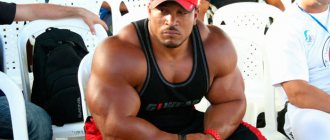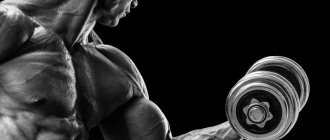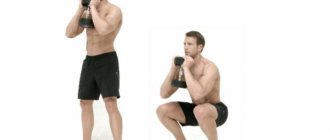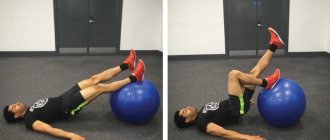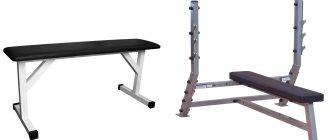- Push-up training
- Pull-up training
- Abdominal muscle training
Each of them is very effective, but only used together will they bring truly good results, increasing your strength and developing muscles.
The only thing that needs to be said is that it will be difficult . By training push-ups and pull-ups at the same time, you will exercise more intensely. The body will have less time to recover. The result of this will be difficulty performing individual circuits in each workout. It may often turn out that you will not be able to complete the entire cycle and will need to repeat it next time.
However, it's worth trying . It's true that progress in the number of push-ups or pull-ups will be slower, but your muscle and strength will grow more evenly and faster than if you only do one workout.
Why you should exercise even if you only have 1–2 hours a week
WHO recommends Physical activity for adults to get 150 minutes of light or 75 minutes of more intense aerobic activity per week, as well as two strength training sessions.
And you can easily fit these recommendations into two classes to improve your health, reduce How much exercise is optimal for heart health? — Harvard Health risk of heart disease, increase strength and endurance, and slightly increase metabolism.
When it comes to muscle growth, even one session is enough for you to see progress. One study, Higher Training Frequency Is Important for Gaining Muscular Strength Under Volume‑Matched Training, involving 20 young men, found that with the same training volume (weight × sets × reps), muscle growth increased regardless of whether the person trained once or three times a week .
This was confirmed by How many times per week should a muscle be trained to maximize muscle hypertrophy? A systematic review and meta‑analysis of studies examining the effects of resistance training frequency and a review of 25 scientific studies on training frequency.
With the same volume, it is not so important how many times a week you do strength training: the muscles will grow in any case.
It is clear that if you study 1-2 times a week, you simply cannot physically withstand the volume that can be done in 3-5 sessions. But the results will come, especially if you are just starting to practice.
Is it possible to pump up on the horizontal bar?
To achieve muscle growth, you need to work hard. And yes, it is quite possible to achieve such a result on the horizontal bar if the training scheme is appropriate
The only thing that is important to immediately understand is which muscle groups the horizontal bar will help pump up.
When you pull yourself up, your biceps, shoulders, back muscles, and abs work. Grip strength, that is, the muscles of the forearm, is also well trained. Your legs are resting as if they were at a resort. You can even imitate walking while hanging - your legs will still not swing. But the abs tense well at such moments, especially the lower part.
In addition, pull-ups, as well as simply hanging on a horizontal bar, are considered very beneficial for health. This position allows you to naturally straighten your spine. While you are hanging, gravity is pulling your body down. The entire back is stretched, the vertebrae are in the correct position.
How to exercise correctly
The main goal is to load the body better. Therefore, we will leave long, low-intensity cardio such as walking or jogging until the time when you have more free time.
Now let's turn our attention to the main thing: strength exercises and intense interval training.
Since you'll be working out at home, we've put together a program of exercises that don't require bulky equipment. But you still have to buy a horizontal bar - without it, your back and biceps will remain without sufficient load.
If you wish, you can also purchase dumbbells and gliding discs or a fitball - this equipment will allow you to complicate some movements and better load your muscles.
We've also put together two short sets of cardio exercises on the spot or with a little movement, so you don't have to go outside. Due to the vigorous pace and short rest, such training will increase endurance with minimal time investment.
Program description
What would you say if I promised that this couple of exercises would dramatically change your upper body? What if I told you that these two movements have been the foundation of training since time immemorial and have produced great results?
You might think that this looks like just another publicity stunt. But I assure you, this is all true. Pull-ups and dips are the key to building perfect upper body muscles.
How to do strength training
We will give two training days. If you only exercise once a week, alternate them.
Workout 1
- Pushups.
- Pull-ups on the horizontal bar with a straight grip.
- Bulgarian split squats.
- Scandinavian crunches.
- Press crunches.
- Superman exercise.
Workout 2
- Hill push-ups.
- Reverse grip pull-ups.
- Stepping up to an elevated position.
- Leg curls for hamstrings while lying on your back.
- Raising legs to the horizontal bar while hanging.
- Swimmer exercise.
To save time, you will perform the exercises in a circuit training format. Do one set of the first movement, then rest for 30-60 seconds, then move on to the second exercise and do one set as well.
Do all six movements in this way, then rest for 1-2 minutes and start again. The number of laps depends on your capabilities and condition. Start with three and eventually increase to five.
Choose a difficulty that allows you to complete 6-12 reps on upper-body exercises and 15-20 on lower-body exercises. Do movements on the abs and back 20–25 times per approach.
But before you start training, you should devote 5 minutes to warming up.
How to warm up
Warming up will warm up your muscles and raise your heart rate, making subsequent exercises easier and more enjoyable. Don't skip this part even if you are limited on time. This will take no more than 5 minutes.
Do joint exercises: turns and tilts of the head, rotations of the shoulders, elbows and wrists, hips, knees and feet, bending. Then - dynamic stretching. All elements, order of execution and number of repetitions are shown in the video below.
How to do the exercises
Since people's physical abilities vary greatly, we will show a progression of movements from the simplest to the quite complex.
Push ups
If you're just starting out and can't do classic push-ups, try the kneeling version.
As soon as you manage to do it 15 times, move on to classic push-ups and do as many times per set as you can. Watch the form of the exercise: do not place your elbows to the sides and tense your abs and buttocks so that your lower back does not sag.
If classic push-ups are not new to you and you can do 10 reps in a set without any problems, then do diamond push-ups. This option better loads the Effect of the push‑up exercise at different palmar width on muscle activities, Comparison of muscle activation using various hand positions during the push‑up exercise and triceps and pectoral muscles.
Place your hands close together so that your index fingers and thumbs touch each other. Perform push-ups using the usual technique, keeping your body straight.
Hill push-ups
If you are good at classic push-ups, perform the “slide” movement in the second workout. This variation allows for better load on the shoulders.
First, try doing it with your feet on the floor. Push your pelvis up so that your body resembles an inverted V, and perform a push-up until your head touches the floor.
If there are no problems with this and you can perform 8-10 times per approach, move on to the option with your feet on a chair. Place your feet on an elevation so that your body from your hands to your pelvis is extended in one line, perpendicular to the floor, and perform push-ups until the top of your head touches the floor.
Pull-ups
An excellent movement for pumping up the back and biceps muscles. If you don’t know how to do pull-ups yet, replace the exercise with lighter variations.
Take note

